And how will we shoot down the UAV
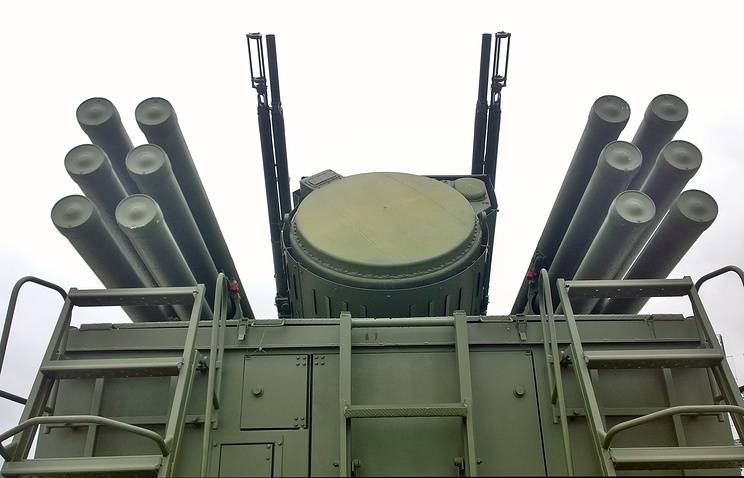
In military conflicts of recent years, unmanned aerial vehicles (UAVs) and loitering ammunition of various sizes have become widespread: from small-sized UAVs used for surveillance and homemade kamikaze UAVs with grenades to large-sized UAVs with optoelectronic systems and strike weapons.
In this regard, the task arose of developing special means of combating them, since the existing air defense systems (air defense) were not able to cope with the massive raids of such UAVs. Also, the need to develop specialized tools was also influenced by the economic side of missile interception of UAVs by existing air defense systems, namely, the fact that the cost of a modern anti-aircraft guided missile (SAM) is many times higher than the cost of the intercepted UAV itself.
Of course, expensive missiles of medium and long-range army and military air defense systems can also be used for such purposes, but their production is quite expensive and complicated, which is simply not permissible in a protracted military conflict.
Possibilities for solving this problem
The solution of this problem must begin with an analysis of the intended goals. These are all kinds of UAVs with a maximum flight altitude of up to 6 kilometers, a distinctive feature of which, compared with a missile weapons is a low airspeed (maximum 70 m/s) and a generally straight flight path.
The main targets for the missile under development can also include unguided and corrected projectiles of multiple launch rocket systems (MLRS) in the final phase of the flight. Despite the relatively high flight speed of MLRS projectiles, their trajectory is close to ballistic, therefore it is easily calculated by modern systems, which makes them a fairly simple target.
From the analysis of the targets, we can conclude that there is no need for a high average speed of the missile, during the flight the missile will not perform maneuvers with high overloads, the maximum range and height of destruction of this missile should not exceed 10 and 6 kilometers, respectively.
Also, when developing a rocket, it is necessary to reduce its cost as much as possible, and, consequently, to simplify it, as a result of which all complex and expensive means of guiding the rocket must be placed on the launcher. Due to the fact that the maximum range of the rocket will not exceed 10 kilometers, it will always be in the visibility zone of the radar station (RLS) of the launcher, therefore, you can use the radio command guidance method, as the simplest and cheapest, in terms of equipment placed on the rocket .
It should also be guided by the fact that in order to repel a massive raid on one launcher, a large amount of SAM data should be placed, and in view of the fact that the SAM being developed will be part of an existing complex, it is necessary to provide for the possibility of installing mixed ammunition from existing and developed missiles with the installation of a new small-sized missile in a regular place of a larger one with minimal modifications to the launcher.
As a result of these measures, the rocket should be a small-caliber body with a warhead (warhead), a propulsion system (DU), a simple steering gear, an explosive mechanism and radio equipment necessary to receive control commands from the launcher.
The result of solving this problem
The main domestic air defense systems designed to fight UAVs are Pantsir-S and Tor in their various modifications.
If we compare these complexes in terms of which of them the developed missile will turn out to be simpler and cheaper, then the "Pantsir" is the most preferable, since in this complex the missiles have an inclined launch directly in the direction of the target, in contrast to the vertical launch on " Torah. And despite the fact that a vertical launch allows you to fire targets at 360 degrees, and an inclined one - only in sectors, the main disadvantage of a vertical launch is the need to implement a missile inclination system towards the target after the missile exits the transport and launch container (TLC), which in turn the queue complicates and increases the cost of the rocket.
Therefore, it is not surprising that it was the developer of the Pantsir-S complex - JSC Design Bureau of Instrument Engineering named after A.I. Academician A. G. Shipunov "at the Army 2022 forum presented a small-sized missile with the 19Y6 index (according to media reports), which is part of the Pantsir-SM complex. A photo of the rocket is presented below.

Small-sized rocket for the Pantsir-SM complex
Analysis of the appearance of the rocket
According to a representative of KBP JSC, the presented missile has the following characteristics:
• maximum range of destruction, m: about 7;
• maximum height of defeat, m: about 5;
• maximum caliber, mm: 80;
• length, mm: about 2;
• rocket mass, kg: about 18;
• mass of warhead with structural elements, kg: about 6;
• warhead type: fragmentation rod;
• maximum speed, m/s: about 800.
If you look at the presented sample, shown in photo 1, you can see the rocket compartments delimited by colors: the head part is highlighted in brown, then behind it is a steering unit with 4 rudders, next, most likely, is a control equipment unit, then highlighted in yellow the warhead of the rocket, and at the end, the propulsion system of the rocket with a nozzle block and fixed stabilizers mounted on top of it is highlighted in black. The rocket is made according to the canard aerodynamic scheme, which is absolutely justified, since this scheme provides high efficiency of the rudders and a small effect on the controllability of the displacement of the center of mass in the process of fuel burnout, and the indicated aerodynamic scheme is quite simple to implement.
Aerodynamic surfaces are represented by two pairs of full-turn rudders and two pairs of fixed stabilizers. The aerodynamic surfaces are installed according to the “plus” - x (+ - x) scheme, while all of them are folding, for compact placement of the rocket in the TPK, and are laid out with the help of torsion bars immediately after the rocket takes off from the TPK. Also, if you look at the block of stabilizers (photo 2), you can see that the stabilizers are maximally shifted to the bottom cut, while a part of each stabilizer is cut off at an angle to the axis of the rocket, this is done to exclude shading by the products of combustion of the remote control. This arrangement of stabilizers is probably used to shift the focus of the rocket as close to its bottom cut as possible.
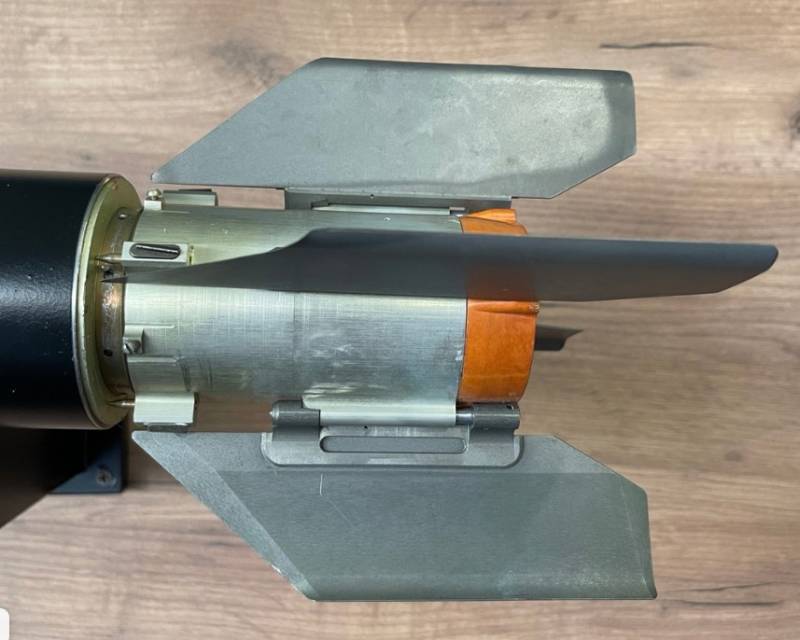
Rocket stabilizer block 19Ya6
The body of the rocket, which, according to the representative of JSC KBP, has a caliber of 80 millimeters, has a large elongation: about 25. You can also notice that the head part and the steering gear compartment located behind it have a slightly smaller caliber compared to the main part of the rocket, about 65 millimeters, the pairing of this difference in calibers is made using a truncated cone. The head fairing of the rocket is made in the form of a truncated cone with an elongation of the order of 3, further it will be considered why the bluntness was made in its nose. Why the narrowing of the rocket after the head part was made is difficult to say, most likely, this was done for some aerodynamic reasons.
Most likely, the rocket body and aerodynamic surfaces are made of aluminum, and the nose fairing is made of composite material.
Bodies and control equipment of the rocket
As noted at the beginning of the article, for the greatest reduction in the cost of the rocket, it is necessary to simplify the onboard control and guidance system as much as possible. So did the designers of JSC "KBP". The missile uses a radio command guidance system, which allows you to abandon the homing heads, since the measurement of target parameters and the development of control commands are carried out on the launcher, and then they are transmitted to the missile via a radio channel. Most likely, to guide this missile, by analogy with the 57E6 missile, the half-straightening method is used [1]. It is quite possible that the 3-point method was abandoned, since neither a laser nor an optical transponder could be found on the rocket.
The missile's control system appears to be 3-channel, with one channel per pitch, heading or yaw and roll angle. Due to the fact that the stabilizers are installed parallel to the axis of the rocket, it can be concluded that the rocket, like the 57E6, is stabilized in roll. The only important element of the control system that cannot be transferred to the launcher is the onboard gyroscope, which determines the angular position of the missile by double integrating the angular acceleration of the missile along the roll. Each pair of rudders is responsible for its own angle, while, most likely, one pair of rudders can only deviate in-phase and can only be responsible for control either in pitch angle or in course angle, and the second pair of rudders must deviate both in-phase and differentially to control along one of the direction angles and the roll angle.
The control equipment converts all incoming commands into an electrical signal, which is transmitted to the steering gear. The simplest and cheapest steering gear is the air-dynamic drive, in which the working fluid is the air flow on the rocket, which is taken through special holes in the head. Such a hole can be seen on the rocket if you look at the end of the head.
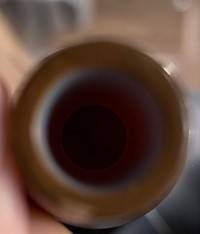
Air intake port for dynamic air drive
Despite the poor quality of photo 3, it can be seen that the rocket nose fairing is empty, and in the depths we can distinguish the air intake of the steering gear with a grid installed on it, a similar grid can be seen on the air intake of the 9M115 rocket from the Metis anti-tank missile system (photo 4 ).
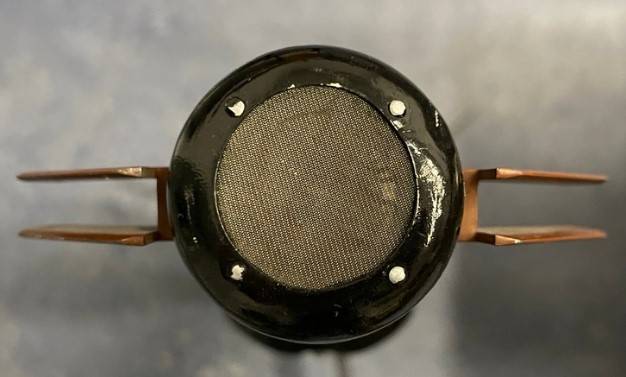
Air intake on a 9M115 rocket
This mesh protects the steering gear from foreign bodies getting into it. The only thing that is still unknown is the location of the antenna for receiving radio commands from the launcher.
It is difficult to say anything about the static stability of a rocket, which directly affects its controllability, since this requires a more detailed aerodynamic analysis.
Warhead
Behind the compartment of the steering drive of the onboard equipment is the compartment of the warhead. It has a length of about 360 millimeters. According to the declared characteristics, the mass of the warhead, together with structural elements, is 6 kilograms, the type of warhead is fragmentation-rod, which is a fairly reliable and easy-to-implement solution.
The warhead is initiated by a signal from an actuating-safety mechanism with two types of target sensor: contact and non-contact. It is difficult to say whether elements of the non-contact target sensor are present on board the missile or whether the non-contact detonation occurs on the command to detonate coming from the launcher. But if we assume that the non-contact target sensor is still installed on the missile, then the transmitting antennas are integrated into the body of the head conical fairing made of radio-transparent material, and the receiving antennas are most likely mounted on the body behind the steering gear.
Propulsion system
The last compartment in the design of the rocket is the control compartment with a nozzle block. Due to the short range of this missile, it uses a single-stage single-mode remote control with a single-nozzle block. The length of the control unit without a nozzle block is about 860 millimeters. The design of the fuel charge, apparently, is a piece of mixed solid fuel, firmly attached to the engine shell. The fuel cartridge itself probably has a star-shaped channel in the profile, since this type of charge allows, depending on the geometric parameters of the “star”, to obtain different geometric laws of charge combustion, and, consequently, different thrust profiles of the rocket engine. Also, the advantage of this type of charge is sufficient filling of the volume of the combustion chamber, which saves the volume of the combustion chamber, and, consequently, reduces the mass of the PS structure.
The ignition system of the engine is a single squib with an additional transfer charge. The ignition system is located, most likely, on the side of the warhead compartment, since it is structurally much simpler compared to its location on the side of the nozzle block.
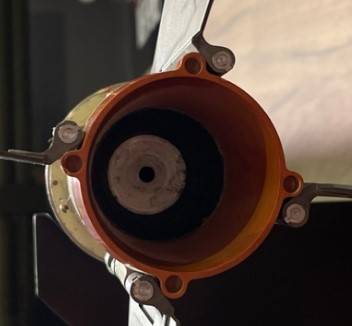
Nozzle block rocket 19Ya6
The rocket nozzle block itself, shown in photo 5, has a diameter in the outlet section approximately equal to the rocket caliber, which makes it possible to reduce the bottom drag of the rocket. As can be seen in photo 5, the nozzle block is made of various materials, while the part closest to the exit section is possibly made of a composite material. Also in the nozzle block, you can observe the installed nozzle plug, it is necessary to seal the combustion chamber of the remote control during the storage of the rocket. However, it is difficult to say why the hole was made in this plug, and, perhaps, this is inherent only in the bench sample.
Also, 4 lugs are made above the outlet section of the nozzle to hold the opened stabilizers in a certain position.
Launcher integration

Pack of 4 TPK for 19Ya6 rocket
Since this missile was developed for the Pantsir-S complex in service, it was therefore necessary to develop such a design for attaching the TPK missile to the launcher, which would require minimal modifications to combat vehicles.
For this, a design was developed, shown in photo 6, it allows 4 TPKs of a new rocket to be placed in a package layout. Its main advantage is that it is installed in place of one TPK 57E6 missile, which allows you to assemble any quantitative combination of missiles of different types on one vehicle, depending on the expected combat situation. Most likely, the standard will be the 8 + 10 ammunition load, which will use 8 new small-sized missiles and 10 57E6 / 57E6M missiles, or the 16 + 8 ammunition load, which will use 16 new small-sized missiles and 8 57E6 / 57E6M missiles. It is unlikely that an ammunition load consisting entirely of new missiles will be used: yes, this will increase the number of missiles on one vehicle to 48 pieces, and on the transport combat vehicle being developed - up to 96 pieces, but this will leave the complex without a "long arm", which will make it quite vulnerable.
The following questions remain open: will the launcher be able to simultaneously direct missiles of different types to targets; and how many targets and how many missiles can simultaneously fire one complex. All this will directly affect how much the combat capabilities of the complex will grow.
Conclusions
What do we have in the end?
Specialists of KBP JSC have developed a fairly simple and cheap short-range anti-aircraft guided missile, the main targets for which will be UAVs, loitering and gliding ammunition and unguided projectiles of multiple launch rocket systems. Yes, this missile, according to the statements of the representative of KBP JSC, is capable of hitting airplanes, helicopters, tactical and cruise missiles, but objectively, these are not its targets.
The new missile will greatly increase the combat capabilities in terms of the number of missiles on board one Pantsir-S complex from one and a half to two times. And the integration into the complex of a promising transport combat vehicle, with a 2-fold increase in the ammunition load of missiles, relative to the base Pantsir-S, will make it possible to create a practical impenetrable dome over protected objects.
Most importantly, this missile will make it possible, from an economic point of view, to more reasonably use the means available in service, due to its use in situations where medium and long-range air defense systems were used to destroy small UAVs, and will help to minimize the ratio of the cost of missiles to goal cost.
Information